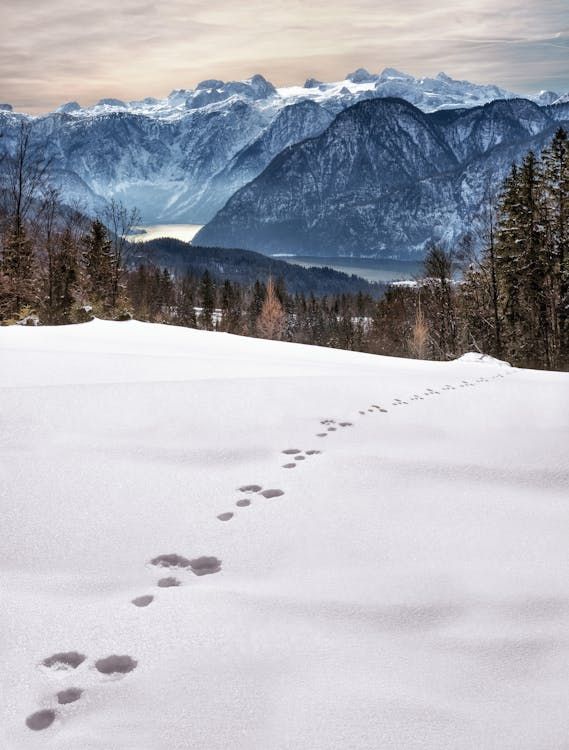Attention
What Animal Tracking Can Teach You About Self-Awareness
Personal Perspective: Animal tracking relies on the search for signs.
Posted June 1, 2024 Reviewed by Kaja Perina
Key points
- Animal tracks are like signs of any kind: they point to something. Become a tracker of your own life.
- Our lives—and whatever wants to emerge—won’t give up their secrets if we don’t offer them devoted curiosity.
- The core instruction of tracking classes—as well as mindfulness—is to pay attention.
- Mindfulness practices descend from the stilling and centering tactics essential to animals and human.

One winter several years ago, I conducted one of my weekend retreats at a conference center in western Massachusetts. When I arrived, I heard about another retreat being offered there the same weekend—on the subject of tracking—which delighted me, because the two retreats were essentially about the same subject: the search for signs. In their case, signs indicating the presence of animals. In our case, signs indicating the presence of callings.
We shared meals together in the dining hall, so I had a chance to talk with the participants from the tracking workshop over the course of the weekend, and what struck me most about them was how excited they were just about the signs of the animals, not even the animals themselves. Which I found inspiring, and shared with the folks in my own workshop. If we could cultivate that quality of enthusiasm just for the hunt, I told them—just for the act of tracking our lives, paying attention to them, being in dialogue with them, approaching them with wonder and curiosity—our lives are bound to reveal things to us that they won’t reveal if we’re not interested. They simply won’t give up their secrets if we don’t offer them some devoted curiosity.
And animal tracks are like signs of any kind: they lead to something, they point to something. In his book The Tracker, Tom Brown says that “A track is the end of a string. At the far end a being is moving, a mystery that leaves itself like a trail of breadcrumbs, and by the time your mind has eaten its way to the maker of the tracks, the mystery is inside you.” I can't imagine a more fitting and beautiful description of the process of discernment around our callings.
The psychologist Abraham Maslow considered wonder and fascination the simplest versions of what he called the peak experience, and the kind of fascination that propels our enthusiasm for the hunt—whether external or internal—is akin to the mindset of wonder that Buddhists call beginner’s mind, one of profound innocence and openness, even if you think you’ve seen it all.
It’s a mindset which views life with the eyes of children, who by the time they graduate high school often have their sense of fascination knocked out of them. They’ve largely stopped asking questions—as have the adults they become—which not coincidentally corresponds with a sharp decline in their sense of motivation and engagement. But they don’t stop asking questions because they lose interest. They lose interest because they stop asking questions.
I‘ve seen this regularly at colleges and universities around the country where I’ve presented the Callings seminars—old people of 20. They seem to have passed through the membrane from youth to adulthood with little of their joie de vivre intact, lost much of their sparkle and initiative, their sense of curiosity and wonder. And they often seem frozen in the headlights of having to declare a major, choose a vocation, make a living, and generally face the stern exigencies of an uncertain future, in the process suffering a kind of precocious senility, becoming prematurely arthritic in their outlook on life.
The man who taught the tracking workshop at the Massachusetts conference center, Paul Rezendes, is the author of a book called The Wild Within, a quality he refers to as “the larger sense of who we are,” and whose tracks we obliterate with our ideas and images of who we think we are, or need to be, and with the continual lapses in attention that put us out of touch with ourselves and our surroundings, with the Maker of the Tracks, and with the core instruction all spiritual traditions teach to those wishing to fulfill their potential: sit down and shut up. Be quiet and listen. Be still and know.
It’s the primary mandate and meditation in Paul’s tracking classes: pay attention. To every footfall, every breath, every sound you make, every nuance of landscape, wind and light. Move from the realm of thinking to the realm of sensing, from the mind of the tracker to the mind of the animal—the coyote silently following the deer through fresh snow, and the deer snapping to attention at the slightest shift of wind that brings with it the smell of coyote; the hawk eyeing the rabbit from above, and the rabbit watching for the shadow of the hawk, which it can distinguish from that of every other bird.
Tapping in to the larger sense of who you are and what calls to you, Paul says, requires paying heed to your environment (outer and inner) with a profound wakefulness. It requires taking an interest in the world again, and in yourself. Whether you’re in the forest, the office or the street, he says, stop once in awhile, stand very still like a tree or a lamppost—or a hunter—and just observe. What you’re after is a moment when your mind isn’t “elsewhere,” a moment when—especially for you urban guerrillas and concrete-jungle animals—you step out from behind that protective bubble of “Don’t mess with me."
Stand on a street corner while waiting for the light to change and listen to the rumble of engines, the rattle of tailpipes, car radios, sirens, jets taking off from the airport, honking horns, shoes scraping on pavement, snippets of a dozen conversations, the sizzle of burning tobacco in someone’s cigarette, a shout, a laugh, a baby’s cry, a car door slamming, the banging of lumber at a construction site, the screeching of tires—little of which is truly audible until you stop and notice how much you tune out, pulling your collar up around your ears.
With this level of awareness, Paul says, you’re keenly attentive to the world—once again—alive to the subtlest movements within and without, to the demands of this moment and the possibilities of the next. And with it, you’re back in touch with the world, and with yourself.
Fittingly, one of the most common techniques we use to manage the many distractions to mindfulness and self-awareness is meditation. And meditation arose among hunting cultures of the Himalayan foothills as a direct descendent of the stilling and centering tactics essential to all hunters, animal and human. And it aims not ultimately for control but acceptance, simply allowing and observing the mind and body being what they are, forces of nature.
Indeed, all mindfulness practices, from meditation to contemplation to animal tracking, share a certain logic: when you take an ordinary phenomenon—a dream, a calling, a sudden emotion or sensation, a trail of footprints in the snow—and subject it to watchful and impartial attention, following where it leads, you can begin to discern what it’s leading you toward, what mystery lies at the end of the trail of breadcrumbs.




